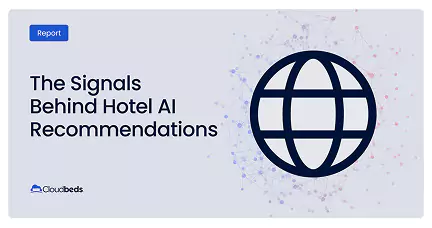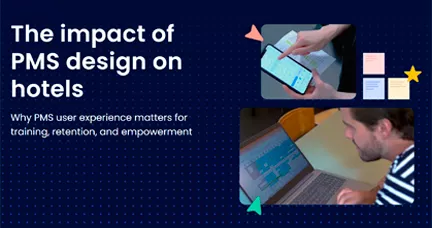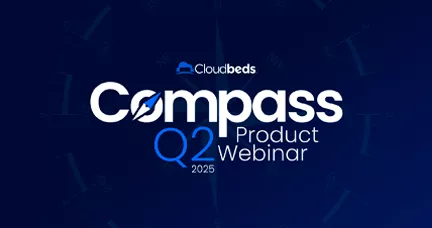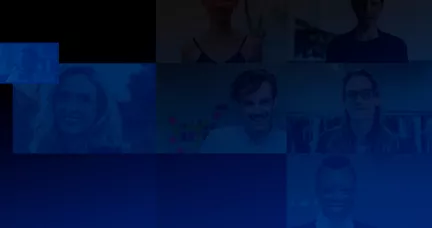Hospitality has long trailed other industries when it comes to embracing change. A recent Deloitte survey highlights this gap: while 99% of airports are adopting new technology to address labor shortages, only 50% of hotels have followed suit.
Surprisingly, the biggest roadblocks aren’t cost-related; in fact, implementation costs ranked sixth. The real barriers are a lack of leadership buy-in and fragmented technology stacks.
When we asked Antonio Cabrerizo, CEO of CAOBA, about this, he shared that the biggest roadblock hotels typically face is “Resistance to change from staff and management, often rooted in a combination of lack of change of management culture, inadequate training & onboarding, and short-term focus.”
This reveals an important truth: modernizing a hotel isn’t just about securing budget for new tools. It requires change at every level, integrating systems, retraining staff, and addressing emotional resistance across the organization.
Maxim Tint, Founder and CEO of Trevo, experienced this firsthand while introducing his company’s contactless check-in solution to a five-star hotel team. As shared on The Turndown, management loved the technology but worried about the amount of change it would require.
“The idea of everything happening digitally is almost like going from a steering wheel to a self-driving car,” noted Maxim.
Watch the full episode of The Turndown with Maxim Tint.
These are the moments where change management becomes critical: not just implementing a new system, but helping an entire organization move forward with clarity and confidence.
What is change management?
Change management is a structured approach to transition from current operations to new and better ways of working.
In the context of hospitality, it involves aligning three critical areas: the tools that enable change, the processes that need to evolve, and the people who carry them out. This means implementing technology that integrates with existing systems, redesigning workflows to support new goals, and guiding staff through the shift, training them for new responsibilities, addressing concerns, and building confidence along the way.
Let’s expand on our digital check-in example to see how this works in practice:
On the tools side, you need a solution that integrates with your PMS and payment system and handles mobile check-ins, collects ID data securely, and delivers digital room keys.
This new solution will require different processes, such as new check-in workflows and new ways of communicating with guests and with the housekeeping team.
New processes will require people to adapt. Front-desk staff who have performed manual check-ins for years will go from having face-to-face conversations with every arrival to helping confused guests navigate technology and monitoring digital dashboards.
Failure in any one area can derail change. Great technology paired with poor training creates frustrated staff and angry guests. Perfect processes without staff buy-in lead to poor compliance.
Why hospitality makes change hard (but necessary)
While change management is important across industries, hotels face a unique set of challenges that make transformation especially difficult.
24/7 operations
Hotels have little time for experimentation. They must get it right the first time to avoid revenue loss, which can paralyze decision-making.
High employee turnover
Hotels must find solutions that simplify processes and are easy to learn and adopt. With 73% of hotel employees trained on the PMS in person by a supervisor or a teammate, when training time is limited, any learning curve creates resistance to change.
And for many hotel managers, time is the scarcest resource. For independent hotels where leaders juggle operations, HR, marketing, and tech decisions, the thought of spearheading a change initiative—no matter how worthwhile—can feel overwhelming.
FREE REPORT
Learn more about the impact of your technology on retention.
Emotional resistance
People choosing hospitality careers typically love working with guests. Technology often frees staff from routine tasks for more guest service, but the perception can differ. Staff may view it as threatening their judgment and personal touch.
Guest-facing impact
Unlike other industries, hotels can’t easily implement solutions behind the scenes. When something goes wrong, guests notice, whether it’s a failed check-in, a missed room assignment, or a delayed response to a request.
Fragmented systems
Many hotels operate with disconnected technology. Adding new solutions to a fragmented ecosystem feels overwhelming. As Lori Kiel explained on The Turndown, “I’m still trying to figure out how to integrate the technology I have before I bring something new on.”
Still, these challenges are exactly why change management matters. Hotels that approach change with the right strategy are proving that transformation is not only possible but powerful.
Your change management playbook
Here’s a playbook for hospitality leaders ready to push boundaries:
1. Start where you’ll see impact fast—then celebrate
Change doesn’t have to start with a full-scale overhaul. Limit risks by piloting new SOPs or tools in one department, one property, or one process where you can prove the concept works and show results quickly.
Once you see results, celebrate them widely. This will help win over possible resistance early on and reframe change as an opportunity for success.
One example of a quick win that Antonio has seen is implementing automated guest messaging. He says, “It’s easy to set up and helps guests get quick answers while saving staff time. Hotels often see better reviews and more upsells with this simple tool.”
2. Align your team around a shared vision
Never make change just a matter of compliance. Involve department leads early to help shape how changes are rolled out and received. These leaders act as a bridge between management and frontline staff and are critical in tailoring new processes so they actually work in real hotel environments. When teams feel included in shaping the future, they’re far more likely to embrace it.
Mauricio Hernandez, Revenue Manager at We Hotels Group, is a great example of a change agent aligning his team around a shared vision. After joining the group, he saw an opportunity to do things differently but also understood that successful implementation meant addressing both operational and emotional barriers to change.
He began by working closely with the front desk team to understand their daily pain points and discussing the benefits of real-time data with leadership.
“When you make the teams, the ownership, and management understand that the system is going to work for us and not us for the system,” he explained, “you reduce a lot of tension, you reduce a lot of workload, and you also reduce a lot of stress that hoteliers normally carry when they have a system or management model that is obsolete or expired.”
3. Choose tech that empowers, not overwhelms
Focus on three areas when selecting solutions:
Good integration capabilities. For future growth, AI and automation work best when systems are properly connected rather than creating new data silos.
Technology partners that will help you succeed. When hostel chain SafeStay adopted Cloudbeds, they had to switch systems across 17 properties in 10 different countries within a two-week window. Cloudbeds took ownership of the implementation and provided support to the group. As COO Peter Zilke noted: “The team from Cloudbeds really added a lot of resources to it and made it happen.”
Experienced consultants for complex changes. Première Advisory Group (PAG) helped The Troubadour Hotel in New Orleans deflag from a major hotel chain with the Super Bowl just weeks away.
Deflagging involves hard deadlines, potential resistance from the outgoing brand, and the need for seamless OTA connectivity. PAG’s expertise, combined with Cloudbeds’ smooth implementation, made it possible to go live within 72 hours.
Antonio reinforces the value of strong support during complex transitions.
“Vendor support or external consulting plays a key role in a successful transition by providing expert guidance, reducing errors, and speeding up implementation. They help train staff, solve issues quickly, and ensure the system is set up to match the hotel’s needs — saving time and avoiding costly mistakes. Their experience turns a complex change into a smoother, more confident process.”
4. Train for confidence
Your team needs to feel empowered using new systems, not frustrated by them. When Fray Group implemented Cloudbeds across two properties, the reception staff were initially hesitant, as many of them had used the old system for more than a decade. Cloudbeds made the process smooth by providing fast answers within minutes and direct access to escalation support. Within two weeks, staff were fully onboard and wouldn’t want to go back to their previous system.
Of course, no change is entirely without disruption. But the right approach can ease the transition.
“Hotel leaders should plan changes during slower periods, start small, and clearly show how the change will make things easier in the long run,” says Antonio. “Involve the team, offer support, and focus on quick wins to build trust. Balancing disruption means being realistic about short-term impact but always keeping long-term value in view.”
The status quo is riskier than change
With rising turnover, evolving guest expectations, and rapid technological evolution, the real risk for hotels is maintaining the status quo. What’s needed is bold leadership willing to challenge outdated norms and rethink hotel operations.
This includes creating dynamic roles that blend hospitality skills with digital fluency to attract younger workers. “I’ve seen some brands take steps to expand traditional roles and align themselves with how these young people want to work,” shared Jacqueline Nunley on The Turndown. “It’s worthwhile to explore what that might look like for a hotel to start employing a younger generation with a different mindset and a different attention span.”
Implement meaningful change with Cloudbeds.
Published on 28 July, 2025 | Updated on 24 October, 2025



